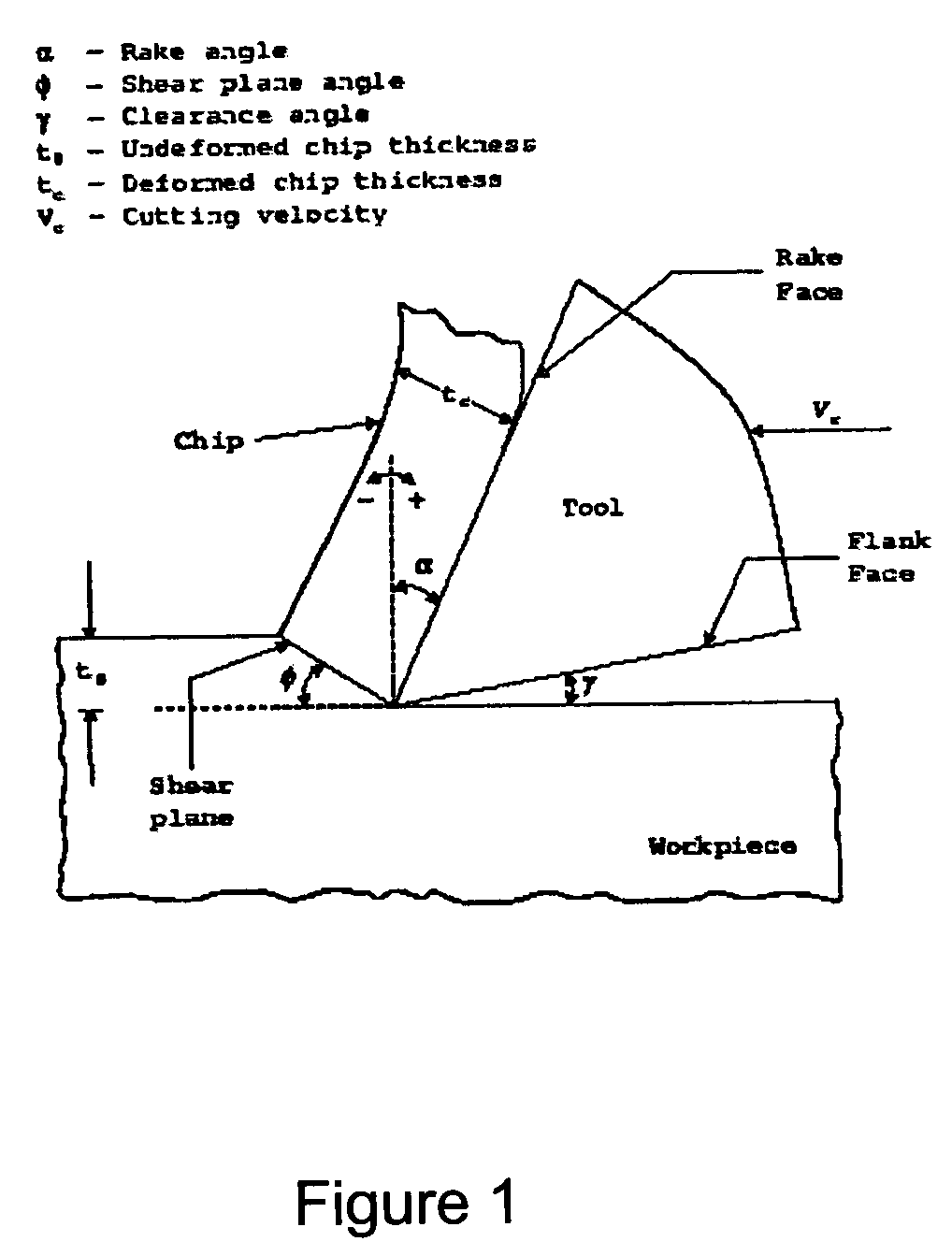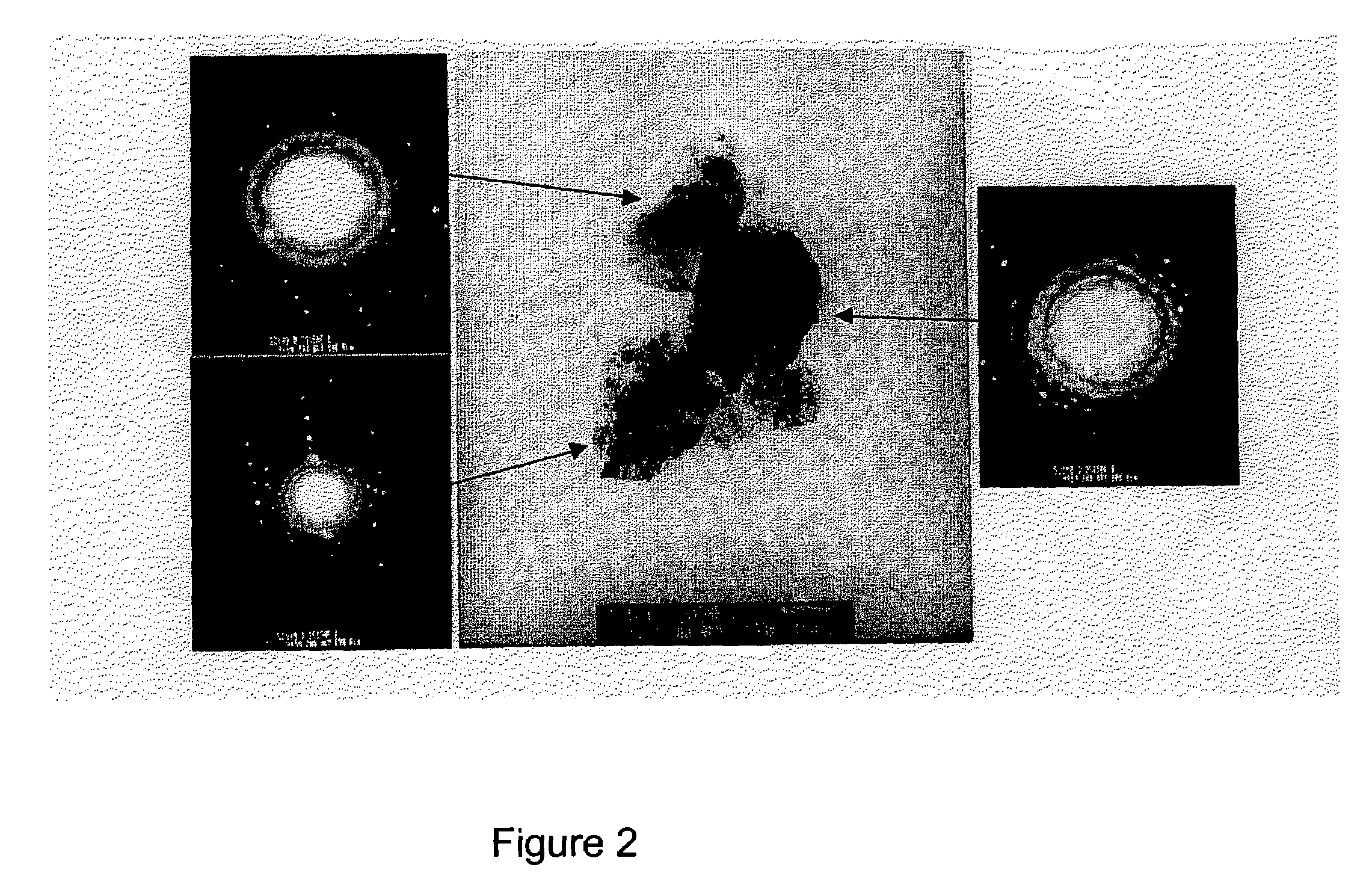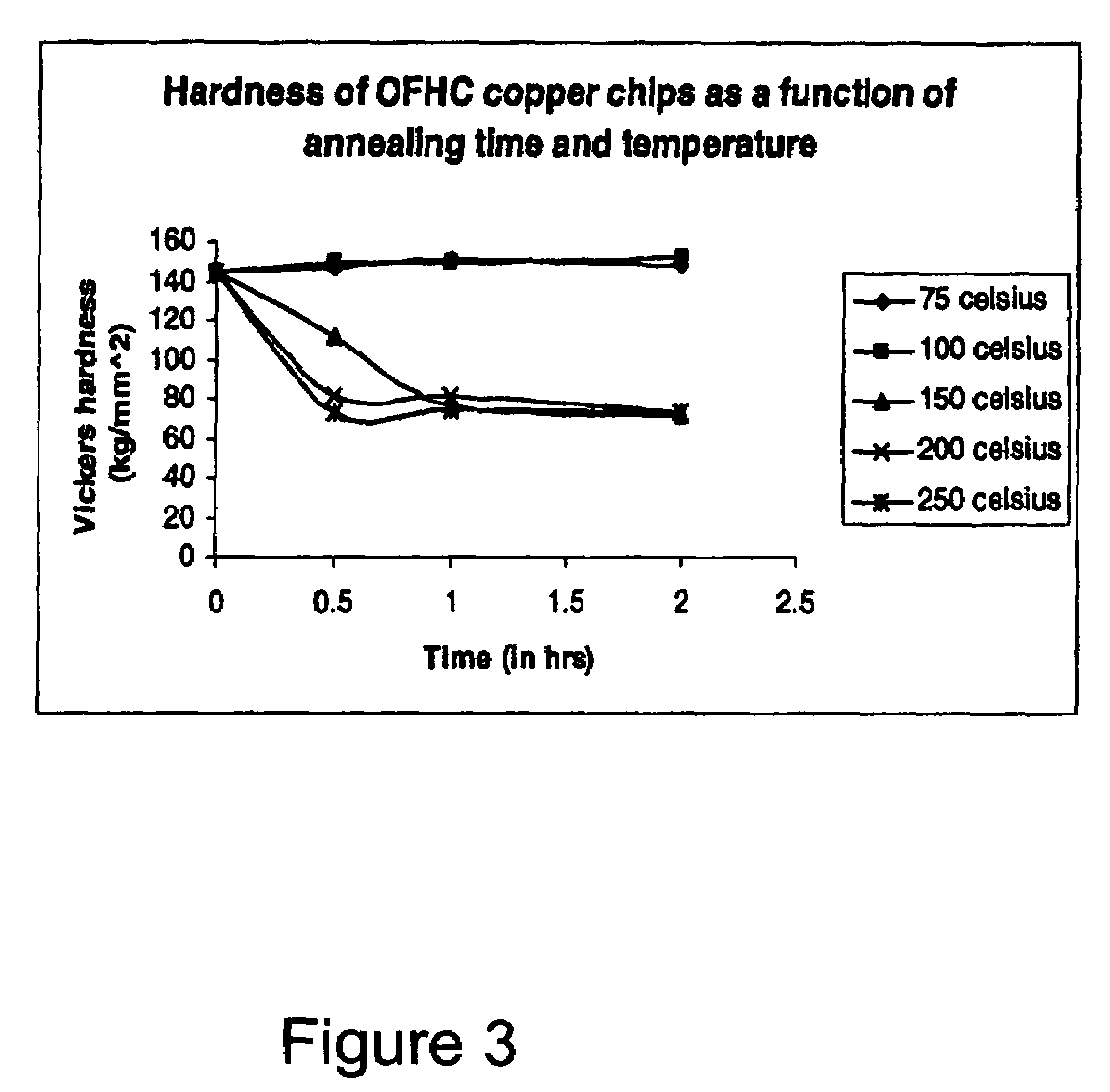Method of forming nano-crystalline structures and product formed thereof
a nano-crystalline structure and nano-crystalline technology, applied in the direction of crystal growth process, blast furnace, metal-working apparatus, etc., can solve the problems of inability to induce large strains of very strong materials, such as tool steels, and significant uncertainties in the deformation field
- Summary
- Abstract
- Description
- Claims
- Application Information
AI Technical Summary
Benefits of technology
Problems solved by technology
Method used
Image
Examples
Embodiment Construction
[0020]An investigation leading to this invention was undertaken to determine the microstructure and mechanical properties of chips produced by machining steels, and to explore the conditions under which they are produced. Steel cylinders of AISI 52100, 4340 and M2 tool steel having diameters of about 15.7 mm were heat-treated by through-hardening and tempering to hardness values of about 60 to 62 Rc, about 56 to 57 Rc, and about 60 to 62 Rc, respectively. The initial microstructures of the steels prior to machining were tempered martensite. The compositions (in weight percent), austenitization temperatures (AC3) and approximate grain size (GS) of the steel specimens are summarized in Table 1 below.
[0021]
TABLE 1Steel Type (AISI)434052100M2C0.38-0.431.000.8Mn 0.6-0.80.310.35Si0.15-0.30.260.35Cr 0.7-0.91.454.52Ni1.65-2.000.140.2Mo 0.2-0.30.045.39P0.035 max0.009 max0.027 maxS0.040 max0.019 max0.005 maxV——2.09Cu—0.090.13Al——0.02Co——0.39W——6.86FebalancebalancebalanceAC3 (° C.) 815-845775-...
PUM
| Property | Measurement | Unit |
|---|---|---|
| size | aaaaa | aaaaa |
| size | aaaaa | aaaaa |
| sizes | aaaaa | aaaaa |
Abstract
Description
Claims
Application Information
 Login to View More
Login to View More - R&D
- Intellectual Property
- Life Sciences
- Materials
- Tech Scout
- Unparalleled Data Quality
- Higher Quality Content
- 60% Fewer Hallucinations
Browse by: Latest US Patents, China's latest patents, Technical Efficacy Thesaurus, Application Domain, Technology Topic, Popular Technical Reports.
© 2025 PatSnap. All rights reserved.Legal|Privacy policy|Modern Slavery Act Transparency Statement|Sitemap|About US| Contact US: help@patsnap.com



